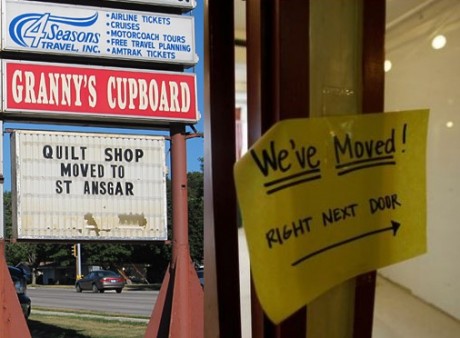According to the lovely Google keyword tool there are 1300 (allegedly) exact searches for the term “301 redirects” globally every month and 2900 searches for the term “website redesign”, yet only 22 searches for “seo migration” and no searches for “mapping 301 redirects” this to me says it all. The aims of this blog post it to cut through the jargon and convince you how important SEO Migration, in particular mapping 301 redirects, is to minimise future ranking losses when you want to revamp your website. Whether your project is small and you want to change or remove a few webpages or you are tasked with a scary complete redesign of your website, this post should help you.
If you want to do the following to your site and you want to keep your website’s current keyword ranking in search engines you need to plan some sort of SEO migration:
- Redesigning your whole website
- Changing the site architecture and therefore the URLs
- Taking heed of the Penguin update and removing pages from your site
- You are removing products you no longer stock
- Your CEO wants you to change things around on the site to make it look more snazzy/or for fun you aren’t sure
- You are changing domain name (usually due to re-branding) – something I would never recommend doing
There are many reasons you may want to change your website, in fact I would recommend constant analysis, measurement, testing and refinement of it, (if you have the time) but fundamentally remember this key point:
If you are going to change the location (URL) of any of your lovely website content you need to tell the world about it, and when I say the world, I mean search engines!
Back To The Website Vs The Real World Principle I Go On About

If you have a business where customers come to you and you service them, you will have a fixed office or a shop location where people will learn to repeatedly visit to spend their earth pounds. Sound familiar? So, if you moved location would you leave without telling anyone or leaving a note? Looking at the images above, which we have all seen before, you would put a note up saying where you have moved to whether this new location is in a different street, a different town or just next door.
Well funnily enough it works the same for websites! (Shocking)
It really is as simple as that and my sarcasm stems from how many businesses I see ignoring it and regarded it as a non-issue! Trust me it’s not something SEO agencies (bless them) made up for something to do, or your amazing in-house web team want to do for some overtime. I would say it is one of the most important tasks you should have on your list if you are making the above changes to your site and what’s even more frustrating it that it’s not even that difficult or scary.
A Quick Step By Step Guide To 301 Redirect Mapping
When doing a complete redesign of your website there are many things you need to think about which I am not going to cover here as there is no point in rehashing solutions great blog posts before this one have already illustrated, so if you want more detail read SEOMOZ’s Website Migration Guide – Tips For SEOs. I am going to tell you how I would recommend approaching page URL changes if you want to change the site architecture or you are removing pages from your website.
1) Basically if you really don’t need to change the URL, don’t! But if you must you will need to put a 301 redirect in place on your server
2) If you want to remove a page from your website, ask yourself why? Only reason I would ever recommend removing content from a site is if you can prove it has no value to your visitor. Is it not ranking in search engines? Does it have a high bounce rate? Or does it get low visitor numbers and you want to counteract Google’s Penguin update. If you want to remove this offending page you need to put a 301 redirect in place on your server
3) If you want to change your website architecture completely, change the “stuff-we-sell” folder to something more sensible like “products”, note that this will change every URL of every page in the “stuff-we-sell” folder and you will need to put 301 redirects in place on your server
Seeing a theme here….
Basically when changing the location of pages on your site you need to put 301 redirects in place on your server, what are these I hear you cry? Well you know that real world moving note I mentioned earlier, it’s that, but for the Internet. By implementing these 301 redirects on your website’s server you are literally telling Google, other search engines, any websites which have linked to you, all social media peeps who have promoted your content, that you are hell bent on moving and the new location (URL) of this content that they know and love. This will help keep the authority of those pages and lower the risk of losing rankings.
So whether you are implementing points 1, 2 or 3 on your website you need to do the following to map the 301 redirects, which your web developer will need to implement on the server. The best way to do this is as follows:

- As above, create a 2 column Excel spread sheet
- When changing a page’s URL – Put the page’s current URL into column A and in column B list the new/proposed URL for the page
- When deleting a page – Put the page’s current URL in column A and in column B either a URL of a relevant current page or if you don’t have one just put the homepage and enter the http://www.top-level-domain.co.uk
- When changing your site’s architecture and therefore multiple page’s URL – Put all the page’s current URL into column A and in column B list the new/proposed URLs for all the pages
- Once complete you can give this spread sheet to your web developer and they will be able to create the correct 301 redirects in whatever programming languages your website server will understand – check out this from Webconfs.com for more information on how to implement 301 redirect in other programming languages
Let’s face it, this task is not rocket science and by spending a little time to do it I guarantee when you next decide to delete some pages or move your site around to won’t see the drops in search ranking you could see if you don’t!
P.S. If you are reading this and you have just made these changes on your site and not implemented 301 redirects, hope is not lost, check if Google is still indexing your old URLs and get those 301 redirects mapped and implemented and you too can reduce the damage these changes could have had to your website’s SEO performance.






